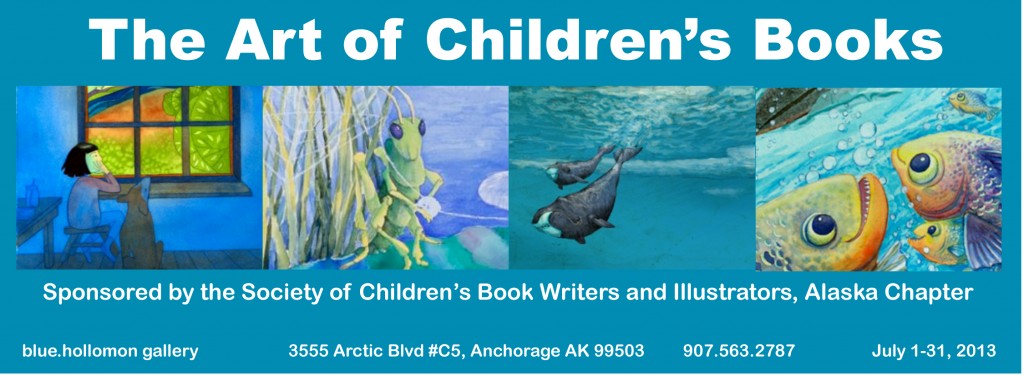Illustrations do this: they illustrate. They illuminate, they enhance, they expand a story. Even in a wordless picture book, the story must come first, then the images step in to relay narrative. A gallery show of picture book art is uncommon, perhaps because the perception is that book illustration doesn’t — or can’t — stand alone without a story as counterpoint.
But each of these illustrations stands alone. Each bursts with narrative in its own right, filling the viewer with the same emotions and questions one would expect from any piece of art, but then takes a step further: Who are these characters? and What has happened? and What will happen next? The viewer is inclined to finish the narrative and imagine how the story ends.
The Society of Children’s Book Writers and Illustrators (SCBWI) is an international society dedicated to elevating both art and literature created for children. The Alaskan chapter of SCBWI is remote, far from traditional publishing hubs, and the artists themselves are separated by great distances. Creating art, like writing, can often feel lonely — the intent of this show is to come together in a community-building effort for these artists, and to offer a glimpse into the worlds of those who are dedicated to creating art for Alaskan children.
Nineteen illustrators are showcased here: painters, drawers, watercolorists, digital artists, newcomers to publishing, seasoned professionals, and pre-published. All are passionate about books, and story, and turning the page to discover what happens next.
These are the words of the gallery. I believe that art is an underlying force in a picture book. Pictures can tell a story outside of the words, because children have feelings and understanding well beyond their capacity to express in language. My own process in storytelling is image driven. C.S. Lewis says:
“I have never exactly ‘made’ a story. With me the process is much more like bird watching than like either talking or building. I see pictures…Keep quiet and watch and they will begin joining themselves up…I have no idea whether this is the usual way of writing stories, still less whether it is the best. It is the only one I know: Images always come first.”

